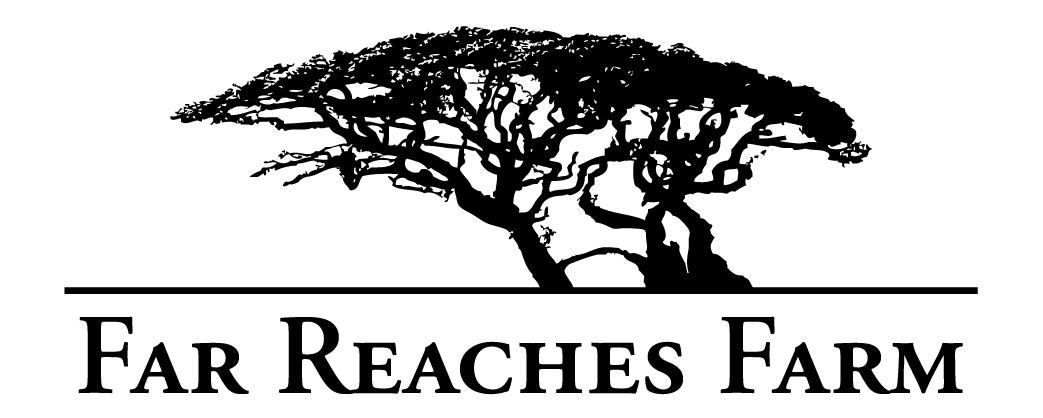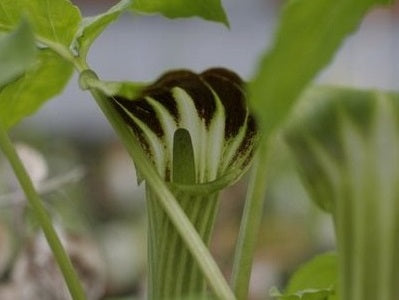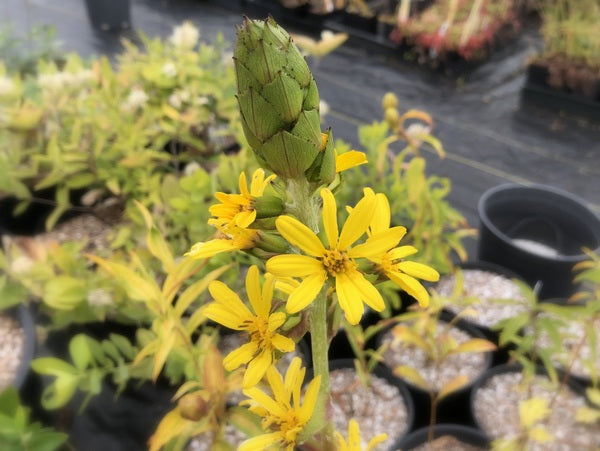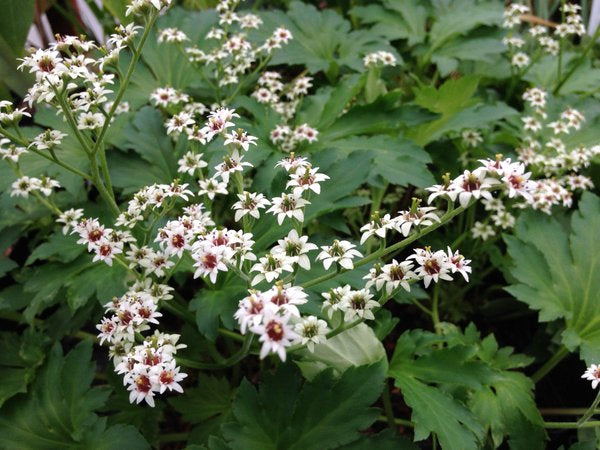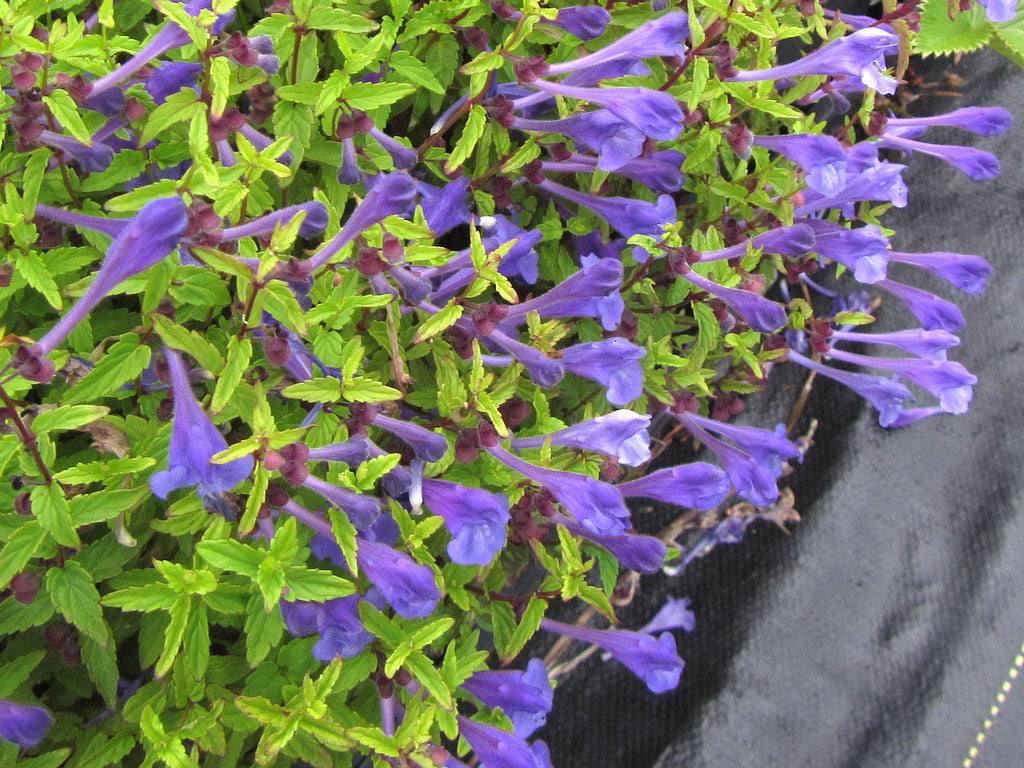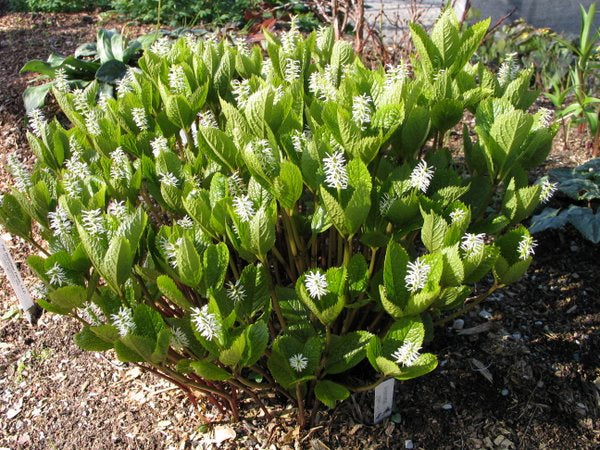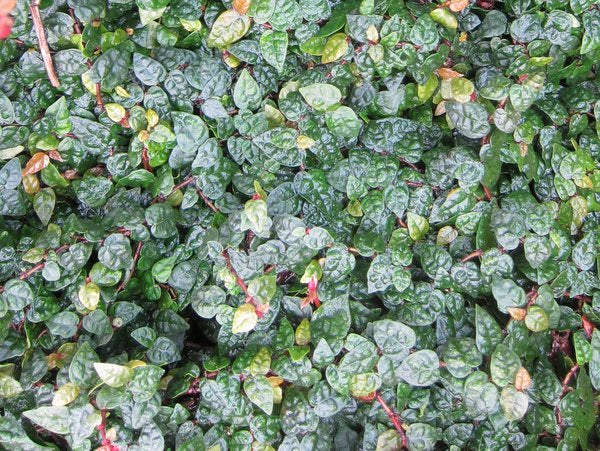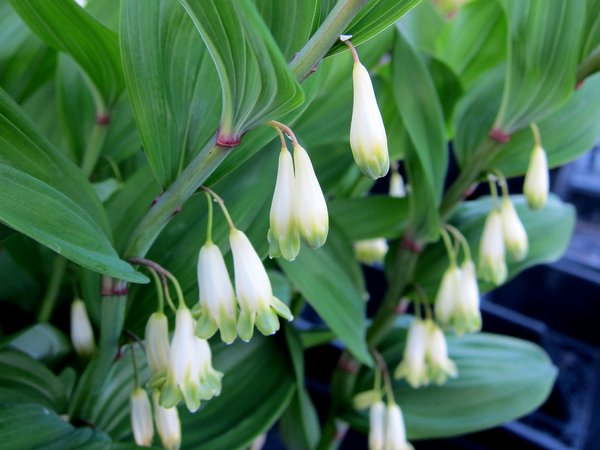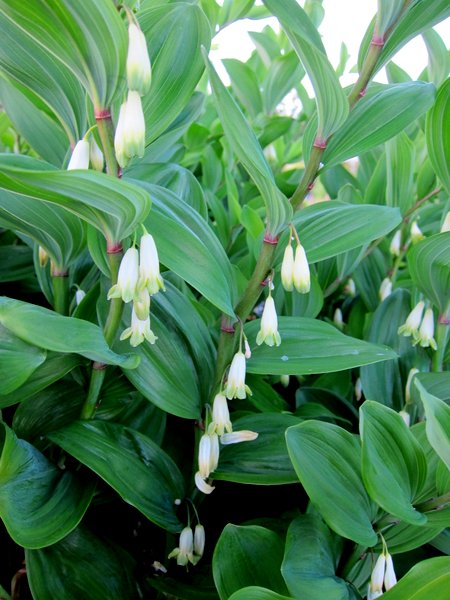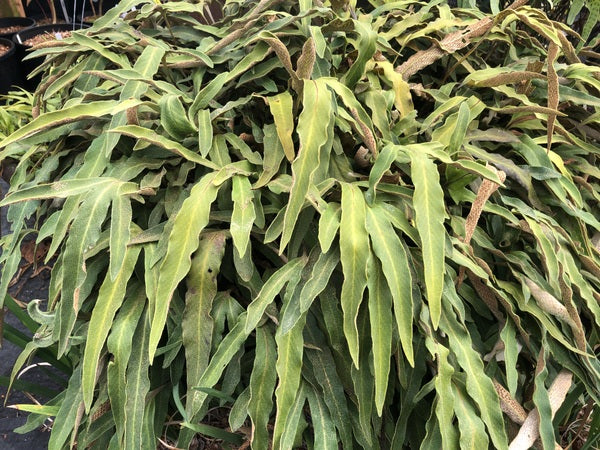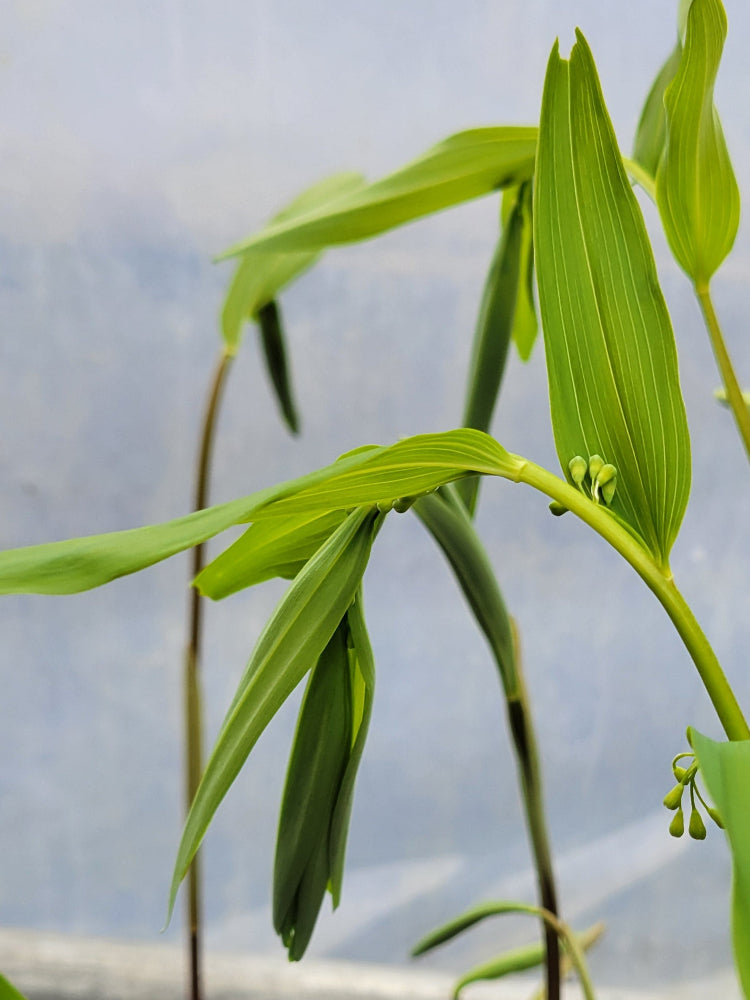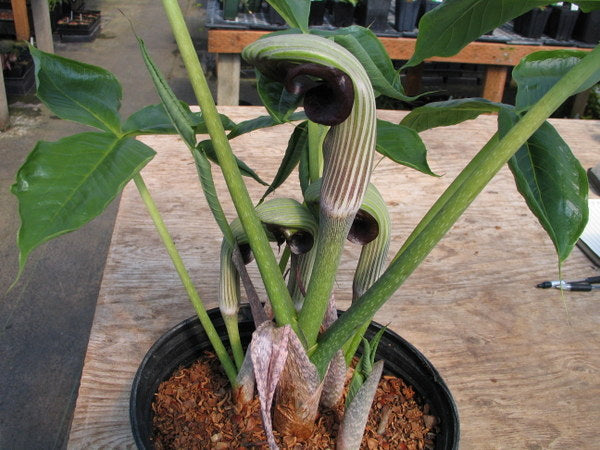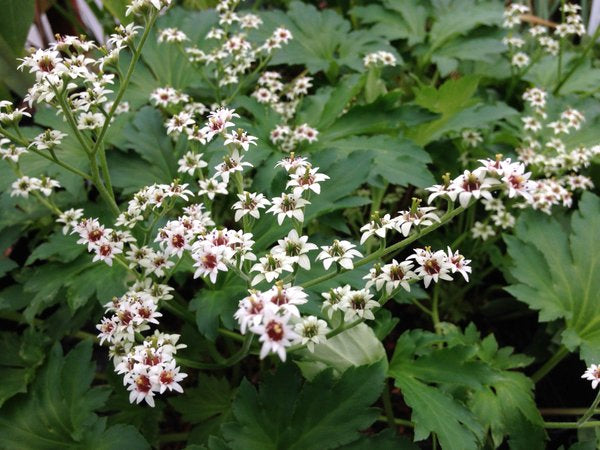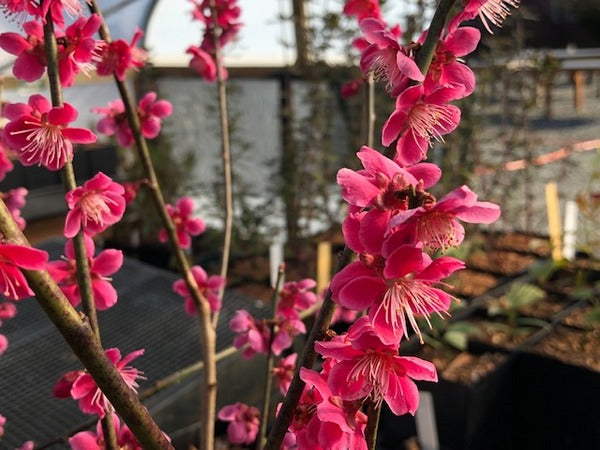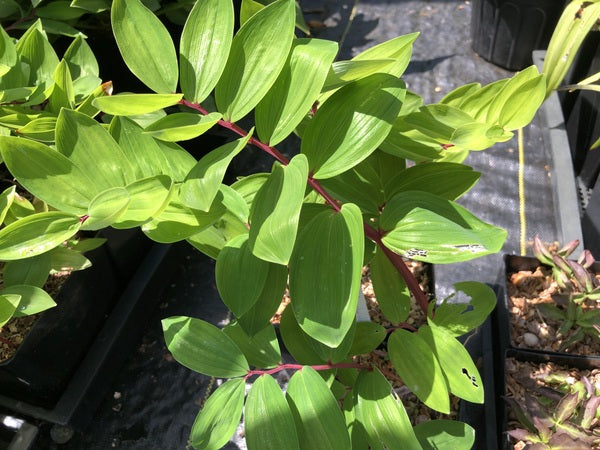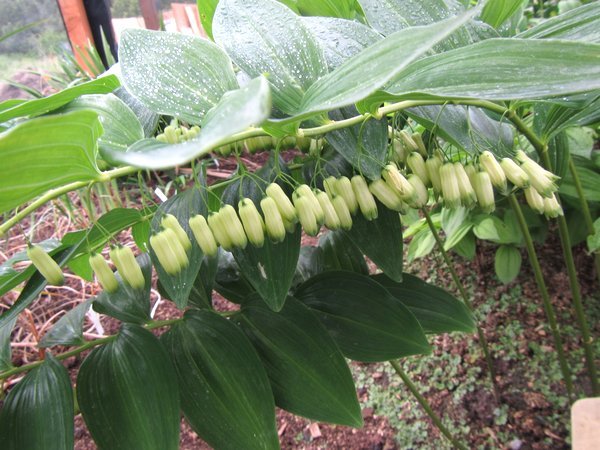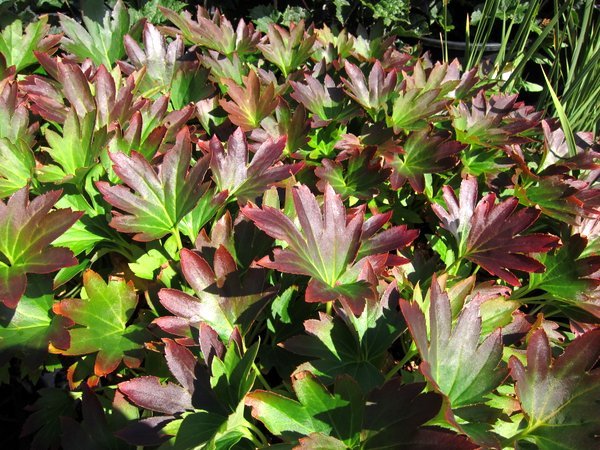Sort by:
36 products
36 products
Lives up to it's common name of Felt Fern. Felty-soft, three to five-lobed fronds stay evergreen and have coppery undersides. Growing as an epiphyte in its native range, this prefers good drainage and a partly shady spot. Spreads very slowly, but definitely worth the wait. What we are selling here is a predominantly 3-lobed form that is going around incorrectly as P. hastata.
Early Form This jumpstarts the Solomon Seal season by being among the very first to start growing in spring. Dense clumps of gracefully thin stems with an instinctual air of culture to the presentation of foliage and white flowers – not unlike the plantsman, educator, author, presenter, tour guide – ok, we’ll stop with the resume of the tasteful Cole Burrell who shared this with us.
